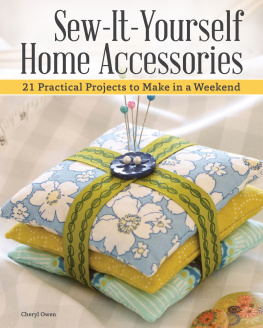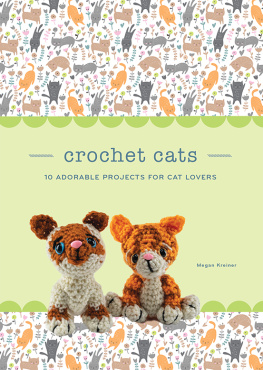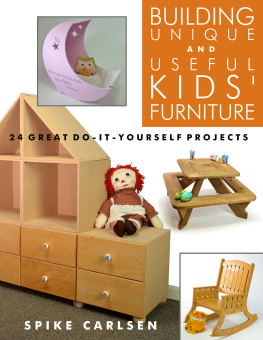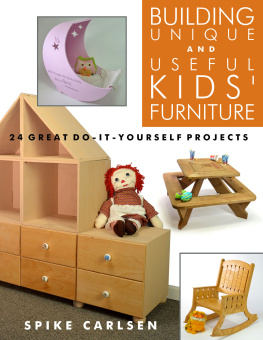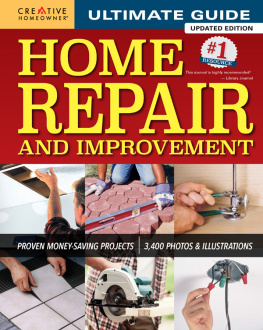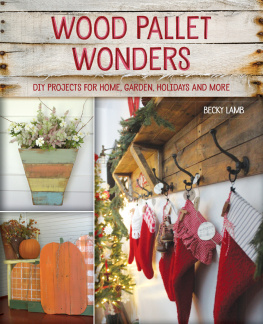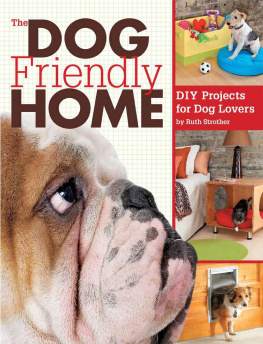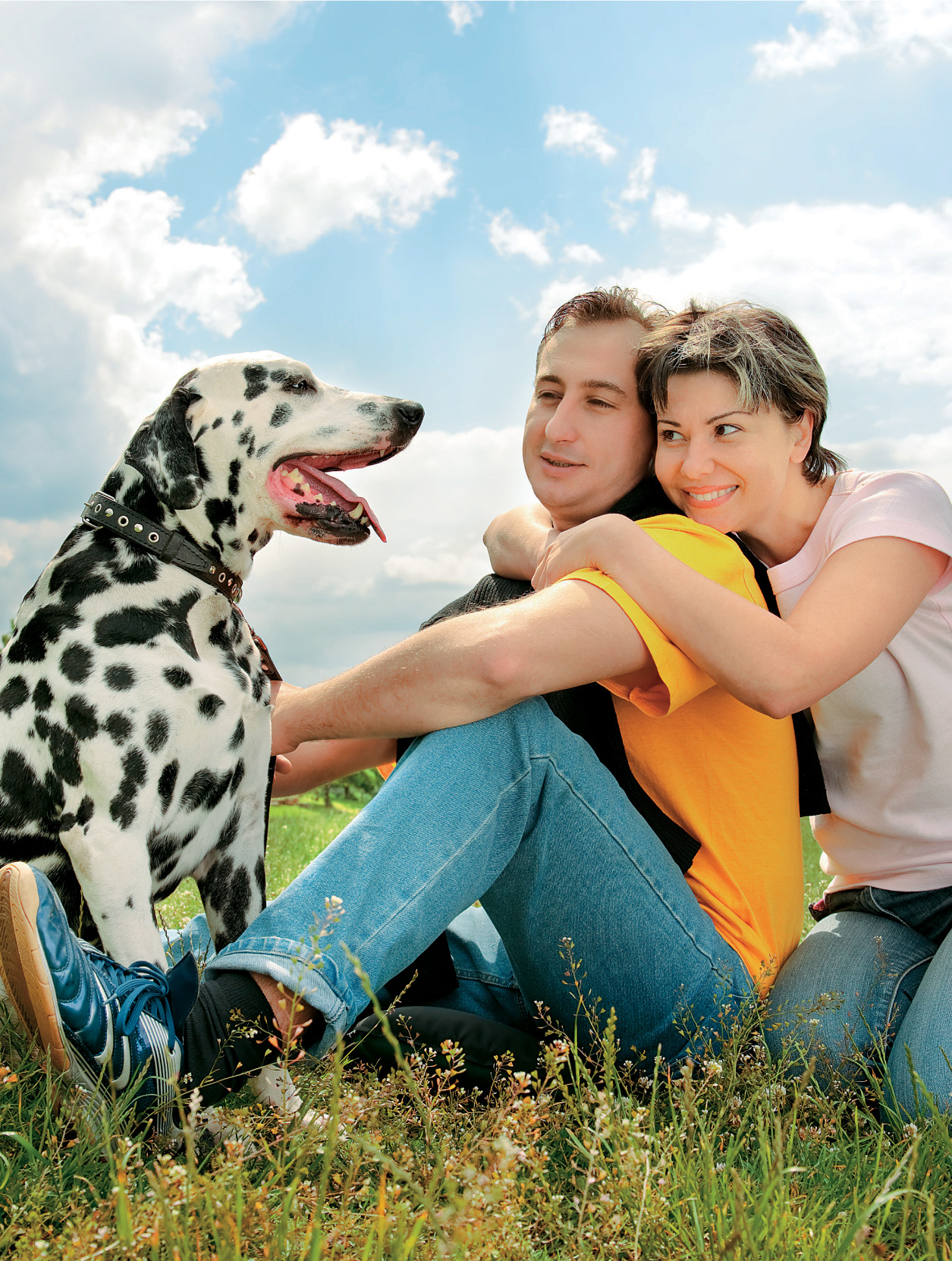The DOG
Friendly
HOME
DIY Projects
for Dog Lovers
by Ruth Strother

CONTENTS
Introduction
MOST OF US CONSIDER OURSELVES TO BE DOG LOVERS. WE CARE FOR OUR DOGS BY WALKING THEM, PLAYING WITH THEM, TEACHING THEM, feeding them, loving thembut we want to do more. The dog-friendly projects in this book were created for beginning do-it-yourselfers who want to make something special for their canine pals. In most cases, all youll need are a few basic tools and your creativity. These projects are simple, useful, and attractive. If you dont consider yourself to be especially handy with a hammer, saw, or drill, you can get a leg up (pardon the pun) by taking a weekend course offered at many local home improvement stores. You will find the brief introduction on materials and tools that follows to be helpful as well.
This book is filled with tips on dog behavior, care, training, and fun. Each project is accompanied by valuable information that will help you acclimate your dog to its use, happily and without fear. Youll learn not only how to install a dog door, but also how to train your dog to use it. Tips on how to get a reluctant dog to accept and use a bed accompany information about the three styles of bed you can choose from when you build your dog a special place. Included are dietary information to help you fill the raised bowls you just built, and information on grooming accompanied by instructions on setting up your own grooming stationall this and more will help you develop a dog-friendly home.
The information in this book spills out of the house and into the yard as well. You can install an invisible fence and teach your dog how to obey it, and create an agility course in your very own backyard.
In addition, this book will identify toxic plants, offer you tips on how to care for a garden in a dog-patrolled yard, and give you pointers on ways to erase those dog-created brown spots in your lawn. Back inside the home, brief and effective ways to repair dog-chewed furniture and remove soiling accidents are covered.
All the projects in this book were designed with cost in mind. Less expensive materials are used when they dont compromise the quality of the project, and more expensive materials are suggested when they will greatly enhance the beauty and integrity of the project.
Making accoutrements for your dog is a great creative outlet. You can take the structural fundamentals of most of these plans and embellish them with your own designs, colors, and materials to make them especially suited to your dog and the style of your home. Turn the ordinary to the fanciful or dignify the piece with sophisticated style; whatever you decide to do, by building and designing that special something for your canine companion, you are taking that one extra step to do more for your dog and show him how much he means to you.
Building Materials for Your Pet Projects
Building homes and accessories for your pets can be accomplished with many of the same tools and building materials we use in our houses and landscapes. However, in some cases the fact that our pets are more inclined than our children to eat their house does impact the selection process. As with people-scale projects, youll select materials for your pet projects based on safety, ease of use, appearance, durability, and cost. And most of the projects in this book can be constructed with simple hand and power tools that you probably own already. On the following pages we review some common materials with these considerations in mind. After that, youll find a very brief refresher course on a few basic woodworking skills youll need for even the most simple pet projects. Then, we jump feet-first into the pool of pet projects.
Sheet Goods
Sheet goods such as plywood and medium density fiberboard (MDF) can be shaped easily with a router and feature a smooth surface that takes paint well on both faces and edges. Machining most sheet goods produces hazardous dust that needs to be collected.
Interior plywood. Frequently sold with a smooth, finish-grade hardwood veneer surface, plywood may be painted or sealed and stained. Plywood cuts easily and is the easiest sheet good to fasten. Hardwood plywood is expensive and should be sealed to protect it and to slow off-gassing of formaldehyde.
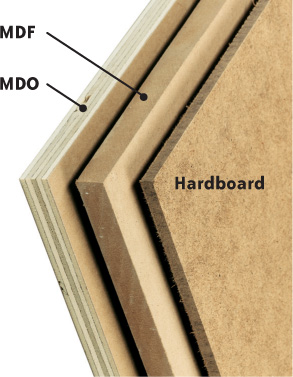
Common sheet goods that may be used for pets include MDO (medium-density overlay), MDF (medium-density fiberboard), and hardboard (also available as perforated pegboard).

Veneer plywood offers a variety of wood species in a durable and cost-effective panel.
Exterior plywood. Panels are inexpensive and easy to fasten and cut. Exterior plywood does not contain formaldehyde, making it preferable to hardwood plywood for interior structures where appearance is not an issue. Surfaces and edges are rough, and the plywood may not lie flat without framing.
Wood
Softwood construction lumber. Stud grade 2 4s, 2 2 furring strips, lath, and construction grade 1 3s are a few examples of construction lumber that is safe, natural, easy to work with and extremely inexpensive. With a little care, you can turn these rough-and-tumble materials into dog projects that belie their blue-collar pedigree.

Sanded plywood, sheathing plywood, and oriented-strand board (OSB) are economical project materials that can be painted, carpeted, or used for structural purposes.
Cedar and redwood are naturally rot and insect resistant and hold paint well. Use them for outdoor pet structures. You can find them in the fencing and decking sections of home improvement stores. Do not use cedar shavings, or any wood shavings for that matter, as bedding in doghouses because it can become moldy.
Hardwood. Hardwood is useful for any interior building project, either for making the entire project or to trim out a larger project made with sheet goods or softwood.
Pressure-treated wood. Pressure-treated wood no longer contains arsenic, as it once did, so its not as toxic as it used to be. Use it on outdoor structures where proximity to soil may cause rot in untreated wood. Avoid pressure-treated wood on parts of structures that may be chewed by your dog.
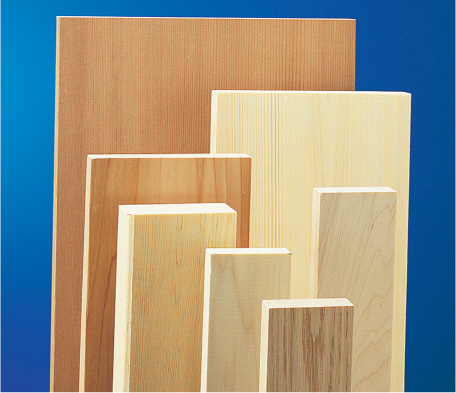
Species of lumber that are suitable for pet projects include (clockwise from top): Redwood, pine, maple, oak, poplar, dimensional framing lumber (spruce, pine or fir), and cedar.


